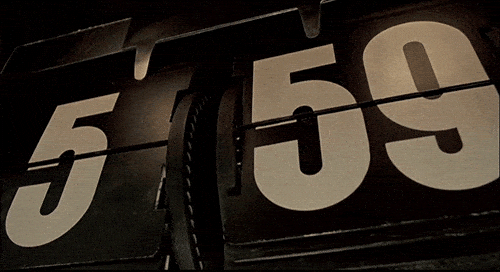So, interesting development.
The guy in front of me and myself were both told that we are not registered to vote.
I explained that I voted here previously and the state of Michigan website shows me registered to vote there, but they will not let me.
Not good, folks. https://t.co/JmnFTERklz— Fr. Joseph Krupp (@Joeinblack) November 3, 2020
Trust me. It isn’t easier going through this election day when you are not committed, on any level, to either of the major party candidates.
I do have a sense of foreboding. Maybe it was seeing all the pictures of workers boarding up the downtown stores in lots of blue-zip-code megacities. That makes me think that they believe that there is a chance of a Donald Trump victory or, at the very least, mass chaos linked to complications counting ballots.
What will tomorrow look like?
Does anyone remember 2000? I stayed up until Al Gore declined to concede and, thus, had to be careful when writing the On Religion column I had planned, based on one of the final speeches of Democrat Joe Lieberman, the vice presidential nominee.
Around dawn, I wrote these lines:
But wait. This week’s soap opera also demonstrated that America remains divided right down the middle on issues rooted in morality and religion. There is a chasm that separates the heartland and the elite coasts, small towns and big cities, the Boy Scouts and the Girl Scouts, those who commune in sanctuary pews and those who flock to cappuccino joints. …
Uh, other than the Boy Scouts sliding left (and into bankruptcy), what part of that sad litany would you change right now?
I will be writing again tonight and tomorrow morning. Thus, I appreciated the Religion News Service guide to some of the religion-angle hooks to watch carefully tonight. Most of these have received tons of GetReligion attention in recent months or years, but here are some crucial points from that news-you-can-use feature:
* Democrat Joe Biden owes his nomination to African-Americans — especially churchgoers — in South Carolina. Now he needs a big turnout from Black churches in Pennsylvania, Georgia and elsewhere. RNS noted:
Although Black voter turnout dipped in 2016, this year Black religious groups have ramped up efforts ahead of Tuesday’s election to mobilize their congregations and to safeguard against voter suppression aimed at African Americans. Democrats appear to be taking these initiatives seriously: On Sunday, Biden spoke at a “Souls to the Polls” drive-in rally aimed at Black churchgoers in Philadelphia.
While Trump may have made small gains among Black men, Black Protestants still overwhelmingly back Biden, and high turnout among Black Protestants in swing states is likely to be a warning sign for the president’s re-election prospects.
Let’s track the partisanship of white Christians in two eras:
1972-1993 (% Rep)
Catholic: 20% -> 40% (+20)
Mainline: 48% -> 52% (+4)
Evangelical: 33% -> 52% (+19)1993-2018
Catholic: 40% -> 40% (0%)
Mainline: 52% -> 50% (-2%)
Evangelical: 52% -> 60% (+8%) pic.twitter.com/GWeqFlMmuv— Ryan Burge 📊 (@ryanburge) November 3, 2020
* If President Donald Trump truly needs white evangelicals in states like Texas and Georgia, then he will be in more trouble than anyone has predicted.
Once again, Trump’s future depends on (a) Sunday morning Mass Catholics and (b) blue-collar Catholics of all kinds in the Rust Belt, as GetReligion has noted many times, including this recent post: “Rust Belt religion —Do political reporters get that Catholics are the key voters in 2020?” This piece contains the hand GetReligion typology of the four essential kinds of “Catholic voters.”
But what about the other crucial Trump voters? RNS writes:
Trump’s coalition won in all three major categories of white Christians in 2016 — white evangelicals, white Catholics and white mainline Protestants — and secured the largest level of support from white Catholics (60%) of any candidate in at least two decades.
But Trump’s favorability ratings among white Catholics — which have sizable populations in Rust Belt swing states — has fluctuated throughout his presidency. More recent polls have pegged Trump’s support with the group below his 2016 numbers at around 52%, while Biden, a white Catholic who has repeatedly invoked his faith on the campaign trail, gained ground.
Trump’s support with white mainliners is harder to assess, as different polling outfits use different categories. But Pew Research recently reported that “white not-evangelical Protestants” have become less approving of Trump’s job performance over time, dropping from 60% in February 2017 to 53% in August 2020.
Once again, these factors are crucial in the Midwest swing states.
* In the past few weeks, several news organizations have noticed another kind of swing voter that has been hiding in plain sight (unless one reads GetReligion, year after year). I am referring to the Hispanic evangelicals who may have swing Florida for Trump in 2016, thus sending him to the White House.
RNS notes that this may also be a newsworthy angle to study in Arizona:
Trump has made a point to reach out to a smaller but potentially impactful community: Hispanic evangelicals. The growing group is more split politically than Hispanics overall and has a presence in swing states such as Florida and Arizona. Trump launched his “Evangelicals for Trump” initiative earlier this year in a mostly Spanish-speaking Florida megachurch.
If Trump can hold on to his gains with Hispanic Latino Catholics and inspire turnout among Hispanic evangelicals, it may be enough to push him over the top in key states.
That’s all for now. Watch for updates as we all watch the chaos, if that is what comes to be.
I was able to vote thanks to the hard-working people at our City Hall. Numerous people came in with the same issue and the good folks at City Hall made sure to square us away. https://t.co/XM2IIWFkiu
— Fr. Joseph Krupp (@Joeinblack) November 3, 2020











